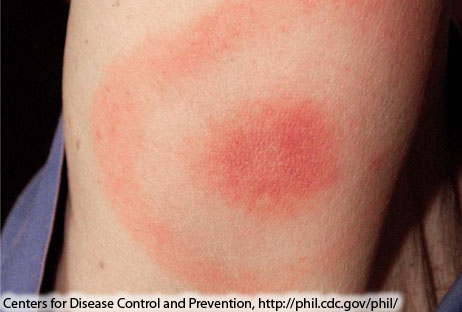
|
MEDIA RELEASE From the Office of the Commissioner of Health, Dr. Gale R. Burstein |
Date April 30, 2015
CONTACT: Mary C. St. Mary/Mary.StMary@Erie.Gov
Phone: 716.858.4941/ Mobile: 716.253.3925
Be Aware – Tick Season is Here
Follow These Tips to Stay Safe and Healthy
ERIE COUNTY, NY—As the weather becomes warmer, the Erie County Department of Health (“ECDOH”) reminds residents of the need to be vigilant against ticks during outdoor activities.
“Lyme disease is a bacterial infection which is spread by bites from tiny, infected deer ticks” said Erie County Health Commissioner Dr. Gale Burstein. “Generally, the tick must be attached to an individual for 36 to 48 hours or more before it can spread bacteria. After spending time outdoors in an area likely to have ticks, such as brushy, woody or grassy places, it is very important that you check yourself, your children and your pets for ticks.”
In tick-infested areas, try to avoid contact with soil, leaf litter and vegetation. If you garden, hike, camp, hunt, work or otherwise spend time in the outdoors, take these steps to protect yourself:
- Use a repellent with DEET (the chemical N-N-diethyl-meta-toluamide) or permethrin according to the instructions given on the product label.
- On children older than 2 months of age and adults, DEET products should be used, preferably in concentrations of 20%-30%, on exposed skin and clothing for protection that will last up to several hours.
- Insect repellents also are not recommended for children younger than 2 months.
- Permethrin products are intended for use on items such as clothing, shoes, bed nets and camping gear, and should not be applied to skin.
- Wear a long-sleeved shirt and long, light-colored pants tucked into socks or closed-toed shoes. While this may be difficult to do during hot weather, it will help keep ticks away from your skin and help you spot a tick on your clothing faster.
- Stay on cleared trails when walking or hiking; avoid the edge habitat where ticks are likely to be.
- To keep your pets safe, talk to your veterinarian about tick control options (tick collars, repellents).
Symptoms of early Lyme disease usually appear between 3 to 30 days after an infected tick bite. If untreated, the symptoms of late Lyme disease can occur from weeks to years after the initial infection. The early symptoms of Lyme disease may be mild and easily missed. Early stage symptoms (days to weeks) include:
- A red, expanding rash called erythema migrans (EM)
- Occurs in 70% to 80% of infected persons and begins at the tick bite site after 3 to 30 days (average about 7 days).
- Rash gradually expands over a period of several days, and can reach up to 12 inches across.
- Parts of the rash may clear as it enlarges, resulting in a “bull's-eye” appearance.

- Fatigue, chills, fever, headache, muscle and joint aches, and swollen lymph nodes
If untreated, people with Lyme disease can develop late-stage symptoms. The joints, nervous system and heart are most commonly affected, such as:
• About 60% of people with untreated Lyme disease get arthritis in their knees, elbows and/or wrists. The arthritis can move from joint to joint and become chronic.
• Many people who do not get treatment develop nervous system problems. These problems include meningitis (an inflammation of the membranes covering the brain and spinal cord), facial weakness (Bell’s palsy) or other problems with nerves of the head, and weakness or pain (or both) in the hands, arms, feet and/or legs. These symptoms can last for months, often shifting between mild and severe.
• The heart also can be affected in Lyme disease, with slowing down of the heart rate and fainting.
“If left undiagnosed or untreated, Lyme disease can cause a number of health problems” stated Burstein. “Fortunately, Lyme disease is preventable and persons treated promptly with antibiotics in the early stage of the infection usually recover rapidly and completely.”
What Can I Do To Reduce Ticks In My Yard?
- Keep lawns mowed and edges trimmed
- Clear brush, leaf litter and tall grass around the house, and at the edges of gardens and stone walls
- Stack woodpiles neatly away from the house and preferably off the ground
- In the fall, clear all leaf and garden litter, where ticks can live in the winter, out of your yard
- Keep the ground under bird feeders clean so as not to attract small animals that can carry ticks into your yard
- Locate children's swing sets and other play equipment in sunny, dry areas of the yard, away from the woods where ticks can be abundant
- Using an approved insecticide once a year (in June) can significantly reduce tick numbers on a residential property
# # #
For more information:
Erie County Department of Health – http://www2.erie.gov/health/
New York State Department of Health -- http://www.health.ny.gov/diseases/communicable/lyme/
Centers for Disease Control and Prevention -- http://www.cdc.gov/lyme/prev/index.html

